You can do it in 3 steps:
Create a mask out of the image
mask = np.zeros((height, width))
points = np.array([[[10,150],[150,100],[300,150],[350,100],[310,20],[35,10]]])
cv2.fillPoly(mask, points, (255))
Apply mask to original image
res = cv2.bitwise_and(img,img,mask = mask)
Optionally you can remove the crop the image to have a smaller one
rect = cv2.boundingRect(points) # returns (x,y,w,h) of the rect
cropped = res[rect[1]: rect[1] + rect[3], rect[0]: rect[0] + rect[2]]
With this you should have at the end the image cropped
UPDATE
For the sake of completeness here is the complete code:
import numpy as np
import cv2
img = cv2.imread("test.png")
height = img.shape[0]
width = img.shape[1]
mask = np.zeros((height, width), dtype=np.uint8)
points = np.array([[[10,150],[150,100],[300,150],[350,100],[310,20],[35,10]]])
cv2.fillPoly(mask, points, (255))
res = cv2.bitwise_and(img,img,mask = mask)
rect = cv2.boundingRect(points) # returns (x,y,w,h) of the rect
cropped = res[rect[1]: rect[1] + rect[3], rect[0]: rect[0] + rect[2]]
cv2.imshow("cropped" , cropped )
cv2.imshow("same size" , res)
cv2.waitKey(0)
For the colored background version use the code like this:
import numpy as np
import cv2
img = cv2.imread("test.png")
height = img.shape[0]
width = img.shape[1]
mask = np.zeros((height, width), dtype=np.uint8)
points = np.array([[[10,150],[150,100],[300,150],[350,100],[310,20],[35,10]]])
cv2.fillPoly(mask, points, (255))
res = cv2.bitwise_and(img,img,mask = mask)
rect = cv2.boundingRect(points) # returns (x,y,w,h) of the rect
im2 = np.full((res.shape[0], res.shape[1], 3), (0, 255, 0), dtype=np.uint8 ) # you can also use other colors or simply load another image of the same size
maskInv = cv2.bitwise_not(mask)
colorCrop = cv2.bitwise_or(im2,im2,mask = maskInv)
finalIm = res + colorCrop
cropped = finalIm[rect[1]: rect[1] + rect[3], rect[0]: rect[0] + rect[2]]
cv2.imshow("cropped" , cropped )
cv2.imshow("same size" , res)
cv2.waitKey(0)
 .
.
